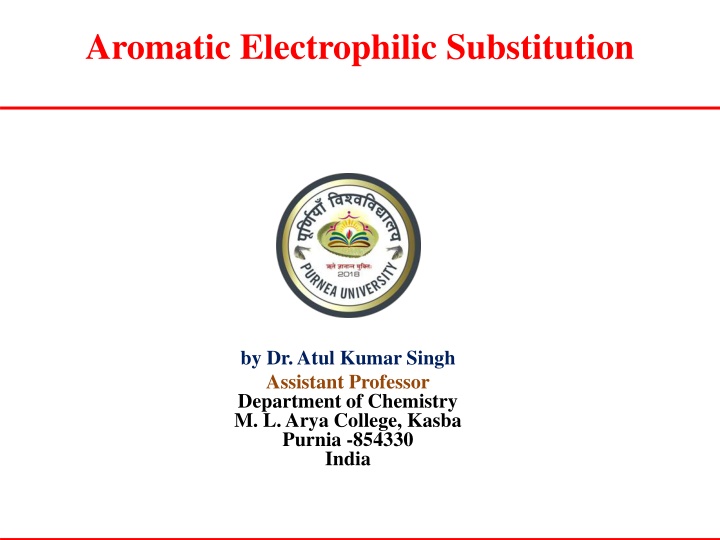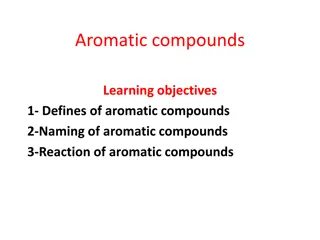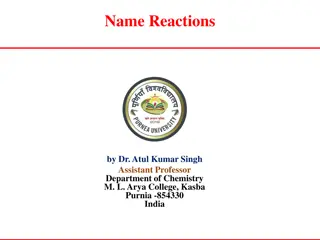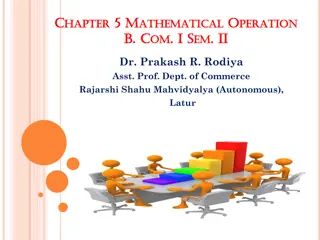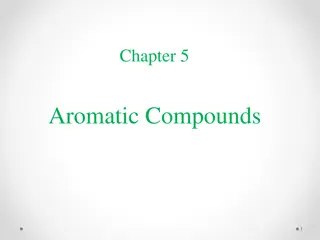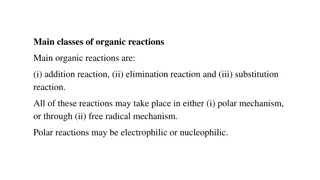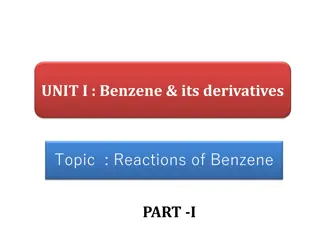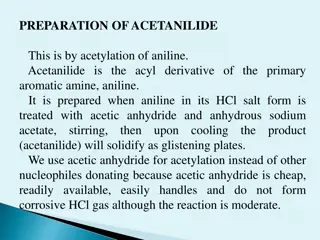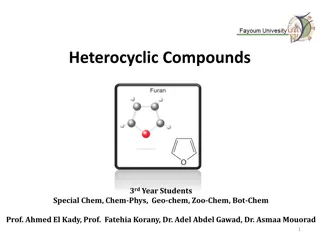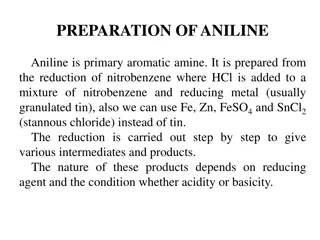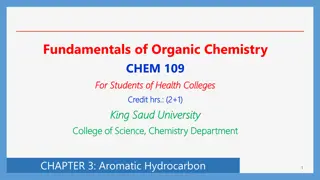Aromatic Electrophilic Substitution: Sulphonation Mechanism
Aromatic electrophilic substitution involves sulphonation of arenes by introducing a sulfonic acid group using fuming sulphuric acid or concentrated sulphuric acid. Sulphonation of benzene is achieved by heating with sulphuric acid or fuming sulphuric acid, forming the electrophile Sulphur trioxide (SO3). This reaction is reversible at high temperatures. Learn about the mechanism and the electrophilic nature of Sulphur trioxide.
Download Presentation

Please find below an Image/Link to download the presentation.
The content on the website is provided AS IS for your information and personal use only. It may not be sold, licensed, or shared on other websites without obtaining consent from the author.If you encounter any issues during the download, it is possible that the publisher has removed the file from their server.
You are allowed to download the files provided on this website for personal or commercial use, subject to the condition that they are used lawfully. All files are the property of their respective owners.
The content on the website is provided AS IS for your information and personal use only. It may not be sold, licensed, or shared on other websites without obtaining consent from the author.
E N D
Presentation Transcript
Aromatic Electrophilic Substitution by Dr. Atul Kumar Singh Assistant Professor Department of Chemistry M. L. Arya College, Kasba Purnia -854330 India
Sulphonation Introduction of an sulfonic acid functional group into an aromatic ring utilizing fuming sulphuric (oleum H2S2O7 or H2SO4.SO3) acid or conc. sulphuric acid is known as sulphonation of arenes.
Sulphonation of benzene may be carried out either by refluxing benzene with sulphuric acid for several hour or heating of benzene at 40 oC with fuming sulphuric acid for 20-30 minutes. The reactive electrophile is Sulphur trioxide (SO3) formed by the dissociation of sulphuric acid.
Sulphur trioxide (SO3) is an electrophile because it is highly polar in nature. In sulphur trioxide, sulphur is bonded to three oxygen atom with double bond. Oxygen bonded with sulphur are electronegative in nature so attract the electrons towards oxygen and create a partial positive charge on sulphur. Now, Sulphur accept electrons to compensate the positive charge and behave like electrophile.
Sulphonation is a reversible reaction at high temperature.
